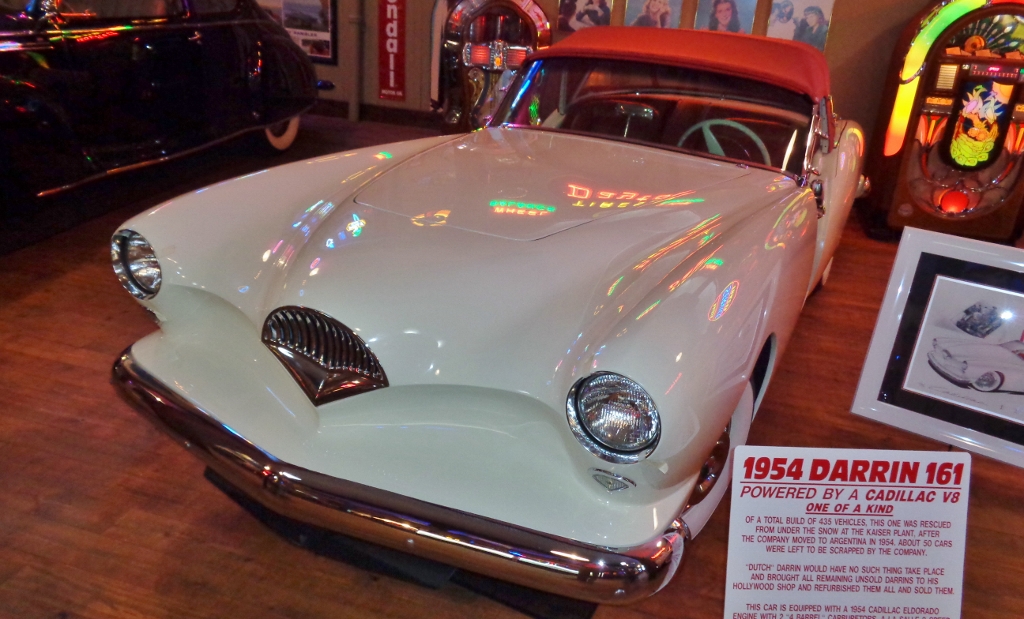
Finding any Kaiser-Frazer automobile is not easy these days, sixty-three years after the last U.S. made motorcar was sold to its new owner. But the rarest of all is likely the Kaiser-Darrin sports car. A fiberglass two-seater meant to draw folks into K-F showrooms to ooh and aah over, and maybe drive out in a Manhattan or Special sedan. But it was too little, too late. By the time of its debut, the writing was already on the wall for K-F.

Henry J. Kaiser may have been a shipbuilding maven, but when it came to selling cars to retail customers, he was a babe in the woods. He complicated things by binding the hands of the one person who actually knew the car business, Joseph Frazer, largely because Henry J’s ego got in the way. “The Kaisers NEVER retrench!” as he was fond of saying, despite the evidence of lackluster sales in 1949-1950. Amid this drama of Frazer’s exit, crashing sales and hundreds of unsold cars sitting around the massive Willow Run factory, came the Kaiser-Darrin!

It was announced in September of 1952 and first appeared at the Los Angeles Motorama. But things grew frustrating for those who wanted to buy one. The gestation period drew on and on. Production versions finally appeared in November ’53, about two months after production had begun.
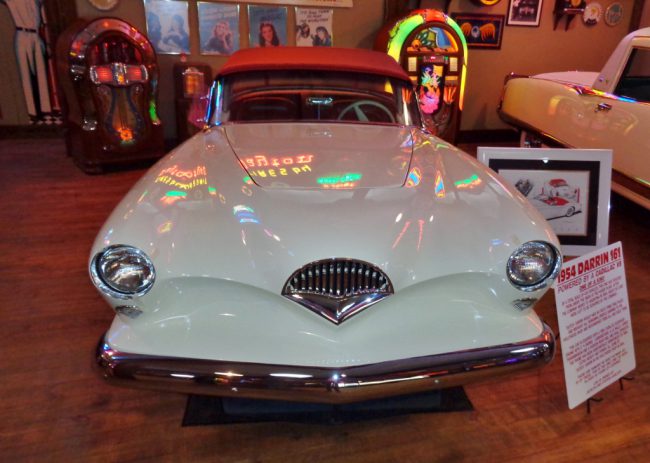
And you still couldn’t buy one, even then. Kaiser-Darrins were not available for retail sale until January 6, 1954, or sixteen months after the car was first announced to the public. Much like the Studebaker Avanti ten years hence, the drawn-out process did not help sales, as folks who wanted one had most likely moved on to other rolling stock.
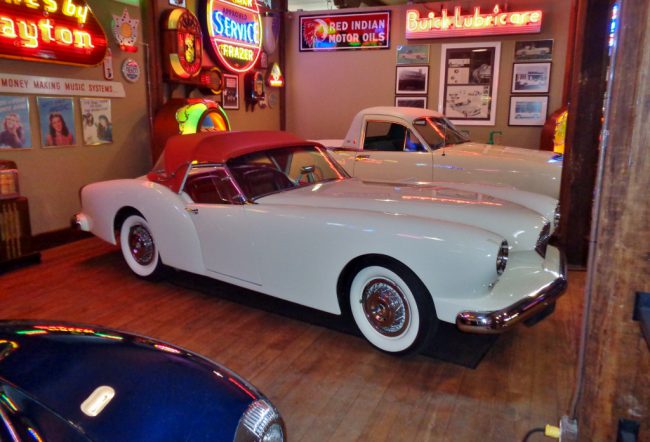
And in 1954 most people, even the few who still WANTED a Kaiser-Darrin–were not so sure about the longevity of Kaiser Motors themselves. Sure, they had purchased Willys-Overland in ’53, but Willys wasn’t exactly setting the sales charts afire either. So by the time the sports job finally started arriving at dealerships, even its sleek Dutch Darrin-penned lines only went so far.
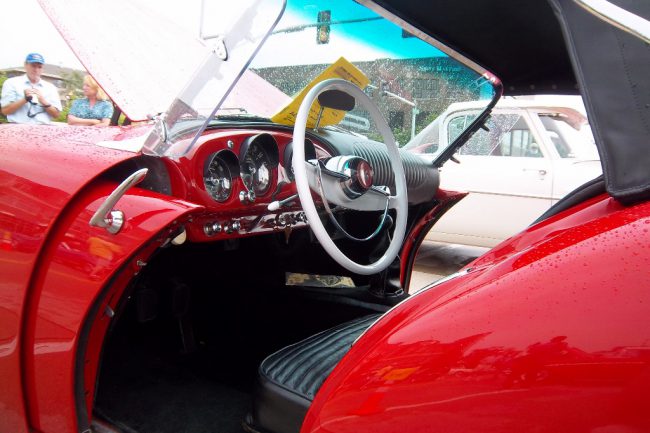
Of course, the really interesting thing about the Kaiser-Darrin were those intriguing doors, which slid on tracks into the front fenders for ingress and egress. Very cool!
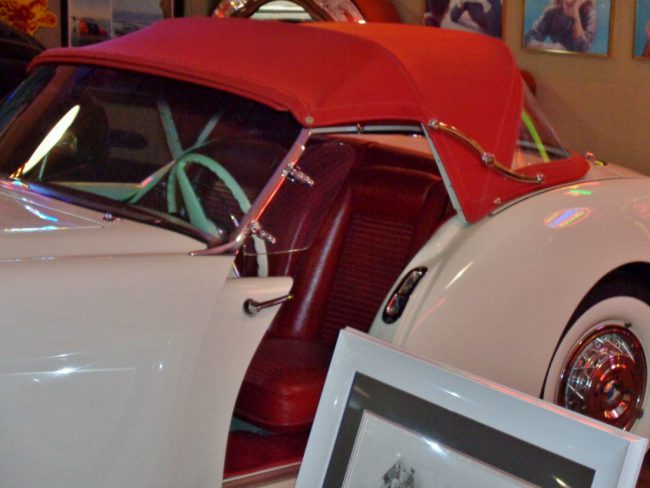
It was a quirky feature, but apparently they did not work all that well, with a reputation for binding up in their tracks. It also had a three-position top, with open, closed and “Landau” configurations, the latter one leaving the portion over the seats open.
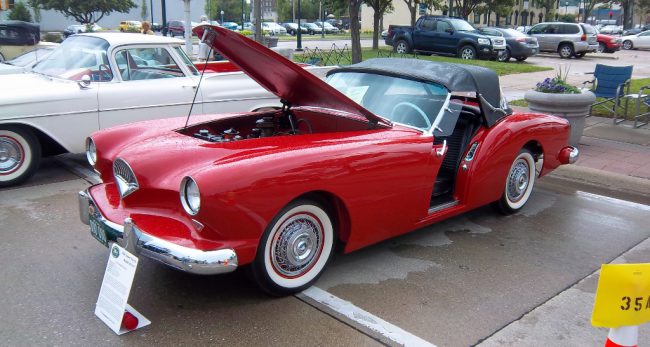
It may have looked good on the outside, but unfortunately, it was powered by a 161 CID “Supersonic” six. Motivation was, ahem, leisurely with 90 hp and a one-barrel (yes, really) carburetor.
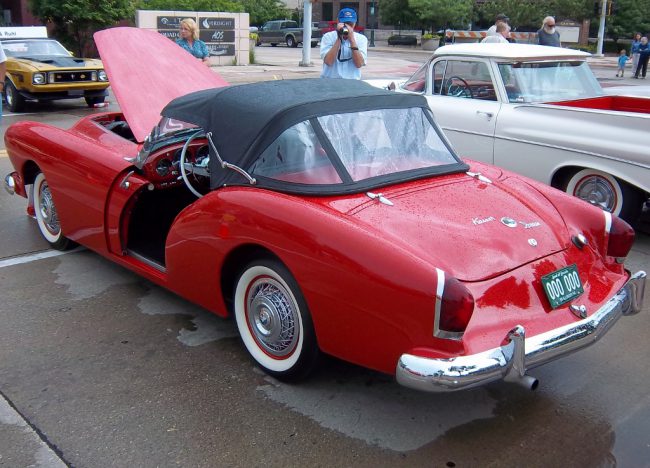
At any rate it didn’t matter. It was too late for Kaiser-Willys in the U.S. by that point, as they were already preparing to move the car lines to Argentina and focus on Jeeps only in the States. The K-D was discontinued in mid-’54, after 435 of the $3655 roadsters had been made.

Dutch Darrin bought the remaining unsold Kaiser-Darrin inventory and parts and sold additional units himself, shoehorning Caddy V8s and superchargers in them instead of the factory four cylinder. About 50 of these much, MUCH livelier “Kaiser-Dutches” were sold. This handsome white over red example was spotted by your author and a friend at a car musuem in downtown Hannibal, Missouri, back in May 2017. The Caddy V8 was most certainly an improvement over the Kaiser-made Darrins!
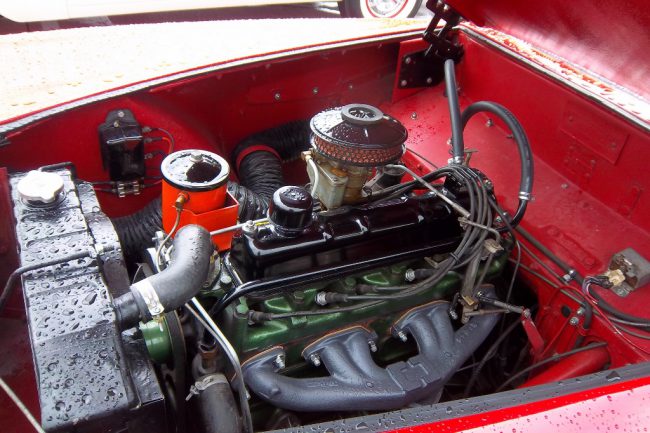
K-F may have been on the way out when the Kaiser-Darrin debuted, but their scarcity, cool lines and those intriguing sliding doors make them a prized collector car today, as evidenced by this pristine red one seen at the AACA Grand National, held in downtown Moline, IL several years ago. Though it rained off and on the whole time, this lovely K-D and other flawless classic cars were a real treat to see!








10 Comments
Ah, the 1950’s :
Unbridled optimism and foolishness .
-Nate
Yep, foolishness.
I get the idea. But with the whole operation crashing down, and a MASSIVE shift in direction (the purchase of Willys-Overland) I don’t know why they spent the money to actually put it in production. The development cost was lost; putting good money on top of the bad, just compounded the loss. A half-developed, rushed car by a company the public had no confidence in, with major practical issues…just wasn’t going to fly.
And whetting the public’s interest and then, for the limited number of customers, not delivering…well, maybe it’s the blindness of those in charge. Tesla is doing much the same, now – and IMHO will come to the same end, only without the support of an established parent company.
Hubris.
Because Kaiser thought he could walk on water with essentially the government as his buyer up until that point, he naturally assumed he was a genius when it came to expensive consumer goods where you had to sell 10s of thousands to just break even every year and hundreds of thousands to turn a profit.
Post WWII there was such a pent up demand for new cars that anything would sell. After 4-5 years the big players ate clowns like him for lunch.
I believe the Henry J car was named from a contest. Yeah, sure. “Aww you shouldn’t have”.
When Frazier left, the only qualified person in the world was Edgar Kaiser.
Hubris, indeed, “The Kaisers NEVER retrench!” However, I’ll cut the man some slack.
He seemed inherently unable to learn the auto business, but he was in his sixties by this point. His whole life had been government contracting – roads, Hoover Dam, Liberty Ships. Not every businessman can make that model work, either.
Before he opened Kaiser-Frazer, he had an established conglomerate. Which remained after K-F was downsized. And, again, once he was back in his comfort zone, selling Jeeps and military trucks via Willys Motors/Kaiser Jeep…it went okay. Not great; they had major quality-control issues with product in that era…but okay, and occasionally innovative.
Old Henry J just couldn’t learn a new way of working. And he couldn’t find the humility to take advice from those who did know how.
It looks like anyone over 5’6″ would have a hell of a time getting in or out of a Kaiser Darrin with the top up, even if that person were a trim Fifties-era American.
One of these made a cameo appearance in Amazon’s season 2 adaptation of Philip K Dick’s “The Man in the High Castle”.
“but unfortunately, it was powered by a 161 CID Willys four-pot”.
No, it wasn’t. As your photo shows. Anyone who can count six spark-plug wires, a six-branch exhaust manifold, has web access or just a good memory knows the engine was a straight six.
Yes, that’s what I get for believing someone who commented on the old post a few years back. Corrected. Though that makes the performance that much more embarrassing, haha!
I resemble that remark.
IIRC, the reason given for the failure was the four-pot Willys. A large quantity of these cars remained unsold, and Dutch Darren bought them to put other engines in.
I suspect other owners did the same.
I don’t know what Kaiser put in there; I can only go by what I’ve read. Including stuff that was pre-Internet. In those pre-regulation days it was possible for some deviance from the official order sheet – case in point, one Canadian Ford dealer got an order of two-door 1968 Custom 500 sedans. With the LTD grille and hidden headlights.
Between the time Willow Run built that photographed car, and it wound up in a museum…many things could have happened.
? Is that a T or F head engine ? .
I dimly recall the 1950’s Willys station wagons having four cylinder F heads, I may be thinking of the CJ3B’s, they all had the F head four banger, I thought all the i6’s were L head flat heads…..
-Nate